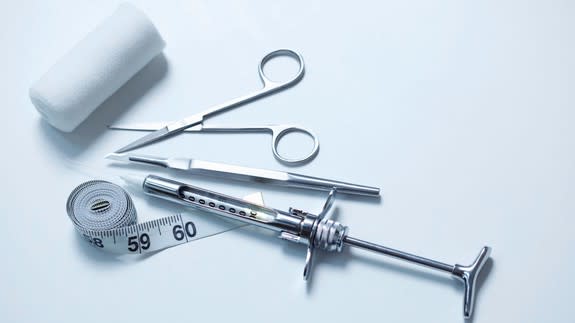Doctors take inspiration from online dating to build organ transplant AI

When Bob Jones performed one of Victoria's first liver transplants in 1988, he could not imagine that 29 years later he'd be talking about artificial intelligence and online dating.
Jones is the director of Austin Health's Victorian liver transplant unit in Melbourne, Australia, and along with his colleague Lawrence Lau, he has helped develop an algorithm that could potentially better match organ donors with organ recipients.
SEE ALSO: This futuristic car is so intuitive it knows your needs — and even your emotions
Comparing it to the metrics behind dating site eHarmony, Jone said they planned to use the specially-designed AI to improve the accuracy of matching liver donors and recipients, hopefully resulting in less graft failures and fewer patient deaths.
"It's a specially designed machine learning algorithm using multiple donor and recipient features to predict the outcome," he explained.
The team plugged around 25 characteristics of donors and recipients into their AI, using the data points to retrospectively predict what would happen to organ grafts.
"We used all the basic things like sex, age, underlying disease, blood type," he said. "And then there are certain characteristics about the donor ... and all the parameters that might indicate the liver might be upset."
Using the AI to assess the retrospective results of 75 adult patients who'd had transplants, they found the method predicted graft failure 30 days post-transplant at an accuracy of 84 percent compared to 68 percent with current methods.
"It really meant for the first time we could assess an organ's suitability in a quantitive way," he added, "as opposed to the current method, which really comes down to the position of the doctor eyeballing all the data and making a call based on their experience."
Improving the accuracy of organ donor matches is vital, because as Jones put it, "it's an extraordinary, precious gift from one Australian to another."
The study has been submitted to a number of academic journals, he said, and the next step will be to use it prospectively in a randomised trial (with ethical approvals).
Jeremy Chapman, director of renal transplantation at Westmead Hospital and Transplant Australia board member, said the preliminary results seemed positive.
However he emphasised it was in its earliest stages, and should be thought of as helping to "inform the decision and not create the decision" to undertake a transplant.
He also suggested that the way liver transplants are performed in Melbourne may mean the algorithm is not immediately applicable in other regions. "There may be particular features in the way they do the procedures [in Melbourne] ... that means that what works in Melbourne may not work in Cincinnati," he said.
As an expert in kidney transplants specifically, he added that the system for organ transplants in renal cases was based not only in predicted outcomes but also on factors like equity and the optimal utilisation of available organs.
"You could easily improve the outcome of the transplants you do by only taking organs from the very fittest donors and putting them in the very fittest recipients," he said. "Using the data we have on past results and trying to optimise the allocation system for fairness, utility and outcome is an ongoing process."
Jones emphasised that their project is in the "very, early stages," but said they're interested in adding to a thorough process that includes not-so-easily quantifiable considerations, as Chapman mentioned. "The parameters we put in are somewhat universal," he said. "But sometimes a number doesn't convey quite how a patient is."
Either way, for Jones, the future will be exciting thanks to new technologies, especially compared to his earlier days in surgery.
"At that stage, it was an extraordinarily risky adventure for everybody, including the patient," he added. "We didn't even dream of the subtlety of being able to properly match a donor with a recipient."

 Yahoo News
Yahoo News 